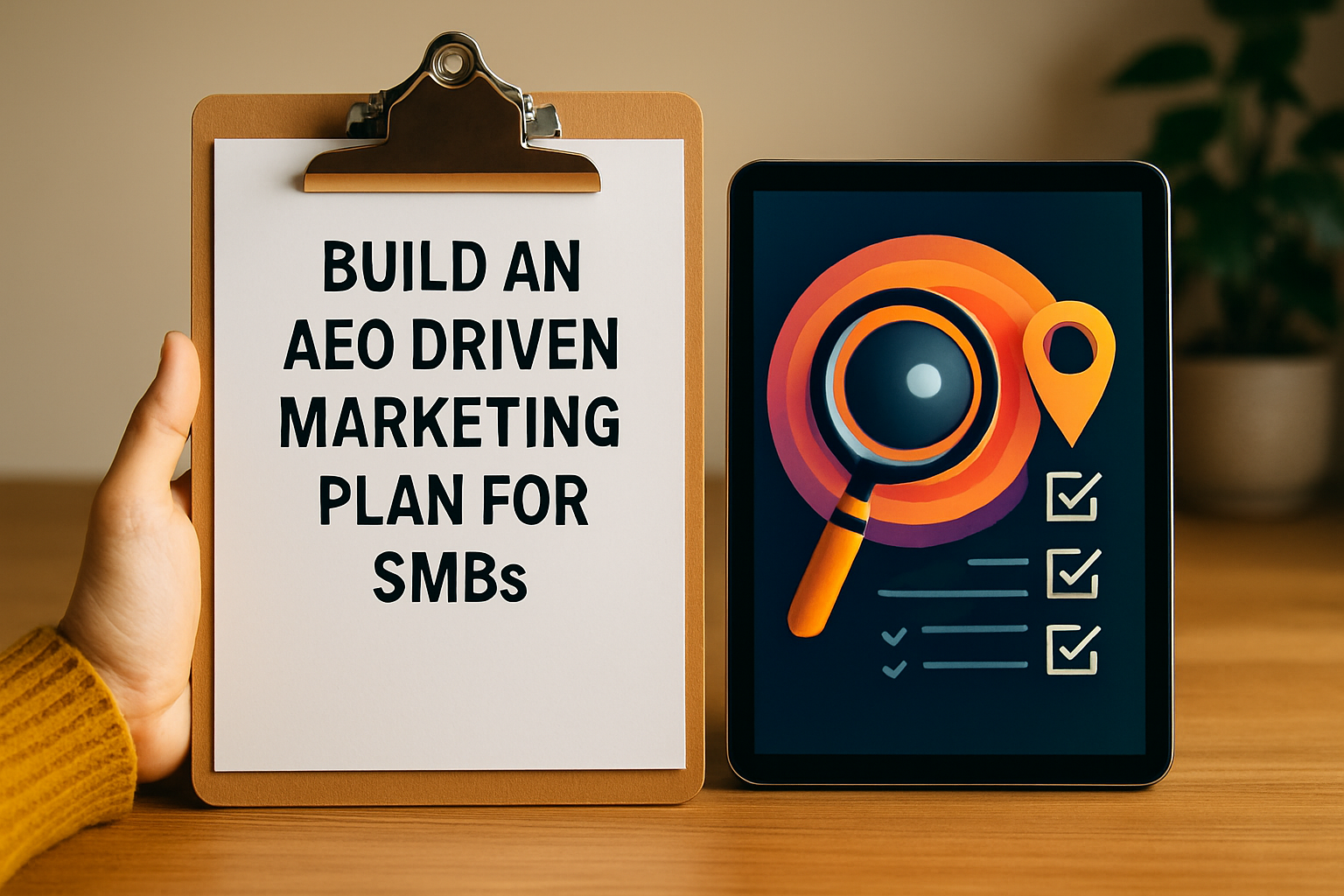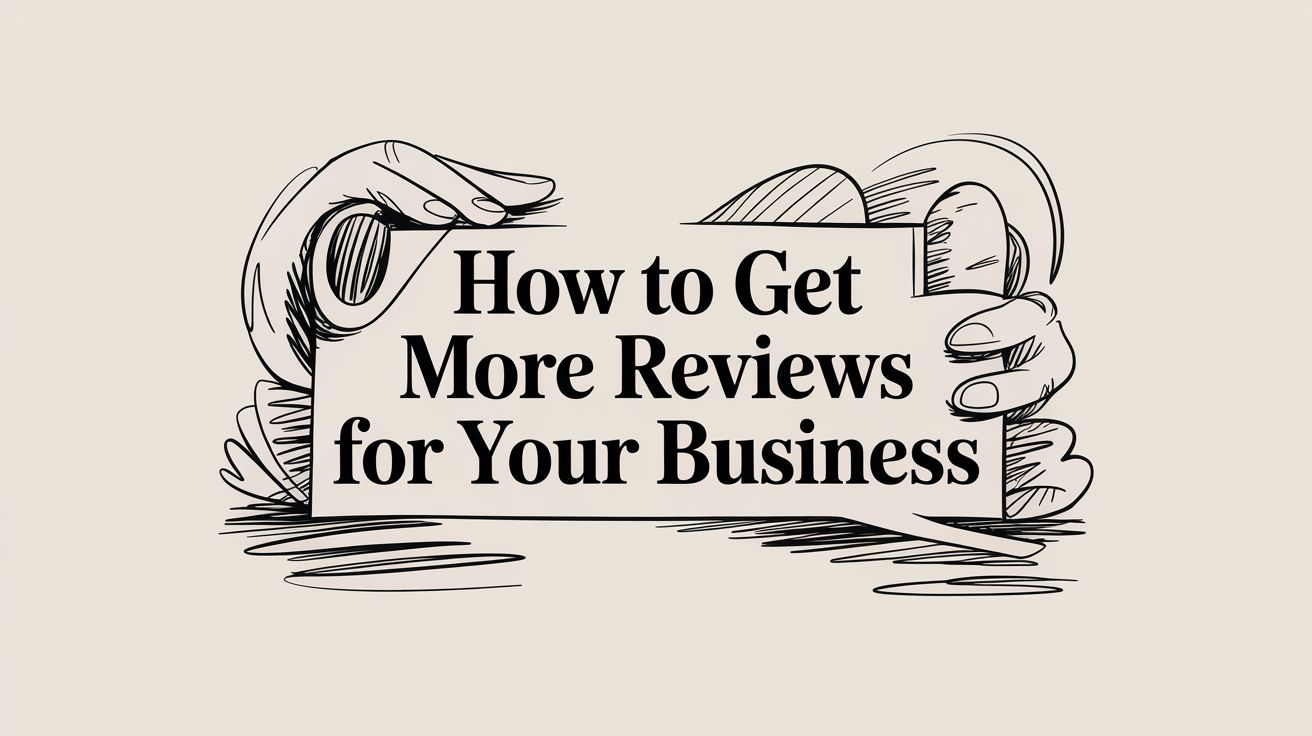7 Lead Nurturing Best Practices for Small Business Growth

Did you know that only about 27% of small business leads are ready to buy immediately? That leaves most of your potential customers searching for answers and weighing their options. Understanding exactly what your leads need, and how they make decisions, can make the difference between a missed opportunity and a lasting relationship. By approaching lead nurturing with insight and care, you set up your business for stronger connections and steady growth.
Quick Summary
| Takeaway | Explanation |
|---|---|
| 1. Understand Your Leads’ Needs | Develop detailed buyer personas to identify motivations and challenges, ensuring tailored communication. |
| 2. Implement Lead Segmentation | Categorize leads by demographics, behaviors, and preferences for personalized marketing efforts. |
| 3. Use Automated Follow-Up Sequences | Create automated email workflows that adapt based on lead interactions to maintain engagement. |
| 4. Measure and Optimize Efforts | Track critical metrics to assess lead nurturing effectiveness and make informed adjustments. |
| 5. Provide Educational Content | Offer helpful resources to build trust and position your brand as an industry expert. |
Table of Contents
- Understand Your Leads’ Needs And Goals
- Segment Your Leads For Personalized Communication
- Use Automated Follow-Up Sequences
- Leverage Multi-Channel Engagement
- Provide Value With Educational Content
- Score And Prioritize Leads By Engagement
- Measure Results And Optimize Your Approach
1. Understand Your Leads’ Needs and Goals
Successful lead nurturing starts with truly understanding who your potential customers are and what drives them. Most small business leads are not ready to make an immediate purchase decision.
According to research from Automated Data, only about 27% of leads are prepared to buy right away. This statistic reveals a critical insight: the majority of your potential customers require personalized attention and carefully crafted communication before they will commit to purchasing.
To effectively nurture leads, you need to develop comprehensive buyer personas that go beyond basic demographic information. These personas should capture the deeper motivations, challenges, and aspirations of your target audience. By mapping out your leads’ specific pain points and interests, you create a foundation for meaningful engagement.
Practical steps to understand your leads include:
- Conduct direct surveys or interviews with potential customers
- Analyze existing customer data and interaction patterns
- Track website behavior and engagement metrics
- Review customer support interactions for recurring themes
Building these personas allows you to design targeted communication strategies that speak directly to each lead’s unique situation. As Fetch Funnel highlights, understanding communication preferences enables more resonant and effective personalization.
Remember that understanding your leads is an ongoing process. Continuously update your personas as you gather more insights, ensuring your nurturing approach remains dynamic and responsive to evolving customer needs.
The goal is not just to sell but to demonstrate genuine understanding and value. When leads feel heard and understood, they are more likely to trust your business and move forward in their customer journey.
2. Segment Your Leads for Personalized Communication
Not all leads are created equal. Treating every potential customer with the same generic approach is like trying to fit a square peg in a round hole—ineffective and frustrating for everyone involved.
Research from Fetch Funnel reveals a powerful insight: segmented email campaigns can generate nearly 58% of all revenue and achieve up to a staggering 760% improvement over non-segmented campaigns. This statistic underscores the immense potential of targeted communication.
Effective lead segmentation goes beyond basic demographics. It involves breaking down your potential customers into distinct groups based on multiple dimensions such as:
- Demographic data: Age, income, location, job title
- Behavioral patterns: Website interactions, purchase history, engagement level
- Psychographic characteristics: Interests, values, motivations
- Buyer journey stage: Awareness, consideration, decision making
By creating these nuanced segments, you transform generic communication into personalized experiences that speak directly to each lead’s unique context and needs. Imagine receiving a message that feels like it was crafted specifically for you—that is the power of intelligent segmentation.
To implement effective segmentation, start by collecting comprehensive data through:
- Customer surveys and feedback forms
- Website and social media analytics
- CRM tracking of interaction history
- Direct conversations with potential clients
The goal is not just to categorize leads but to understand their individual journeys and craft communication that feels relevant and valuable. Personalization is about making each lead feel seen and understood, not just marketed to.
Remember that segmentation is an ongoing process. Regularly review and refine your segments as your business evolves and you gain deeper insights into your customer base.
3. Use Automated Follow-Up Sequences
Imagine having a virtual assistant dedicated to nurturing every single lead without requiring constant manual intervention. Automated follow-up sequences transform how small businesses engage potential customers by delivering targeted communication systematically.
According to research from B2Better, sophisticated automated workflows with branching logic can dynamically adapt follow-up strategies based on individual lead interactions. This means your communication becomes intelligent and responsive rather than static and generic.
Key advantages of automated follow-up sequences include:
- Consistent engagement without manual effort
- Personalized communication at scale
- Timely and relevant content delivery
- Ability to track and optimize interactions
- Reduced risk of leads falling through the cracks
Practically speaking, an automated sequence might look like this: A lead downloads your resource, triggering a series of strategic emails. Each subsequent email changes based on their previous engagement. Did they click the first email? They receive more detailed content. Did they ignore it? They get a different approach.
As highlighted by The Pulse Spot, automated email marketing campaigns keep potential customers engaged over extended periods without requiring constant manual oversight.
Pro tips for creating effective automated sequences:
- Map out logical progression of content
- Create multiple paths based on potential interactions
- Include clear exit conditions for sequences
- Regularly review and optimize performance
- Ensure messages provide genuine value
The magic of automated sequences lies in their ability to feel personal while operating efficiently. You are essentially creating a customized journey for each lead that adapts and responds in real time—all without being chained to your computer.
4. Leverage Multi-Channel Engagement
Your potential customers are everywhere—and they expect to interact with your brand on their preferred platforms. Multi-channel engagement is about meeting leads where they are, not where you want them to be.
Research from Fetch Funnel reveals that using multiple touchpoints like email, SMS, social media, and retargeting ads helps keep your brand consistently visible. As Visme notes, an omnichannel approach ensures messaging consistency and increases conversion opportunities across varied lead preferences.
Effective multi-channel strategies involve:
- Email marketing for direct communication
- Social media for engagement and brand storytelling
- LinkedIn for professional networking
- Retargeting ads to re-engage interested leads
- Webinars for in-depth educational content
- SMS for quick updates and reminders
The key is not just being present on multiple channels, but creating a seamless and integrated experience. Each interaction should feel like a natural continuation of the previous one, regardless of the platform.
Practical implementation means developing a unified communication strategy that:
- Maintains consistent brand messaging
- Adapts content to each platform’s strengths
- Tracks lead interactions across channels
- Provides value at every touchpoint
- Respects individual communication preferences
Think of multi-channel engagement like a conversation. You are not just broadcasting messages, but creating a dialogue that adapts to how each lead wants to communicate. Some might prefer detailed emails, others quick social media updates.
By diversifying your approach, you increase the likelihood of connecting with leads in meaningful ways. The goal is to be helpful, present, and responsive across the platforms your potential customers use most.
5. Provide Value with Educational Content
Stop selling. Start teaching. Educational content transforms your brand from a pushy vendor into a trusted advisor that leads actually want to engage with.
According to Fetch Funnel, offering stage-appropriate educational resources like guides, white papers, and video tutorials not only nurtures leads but significantly reduces customer acquisition costs while building long-term trust.
Types of educational content that resonate:
- Comprehensive how-to guides
- Detailed industry research reports
- Short video tutorials
- Webinars addressing specific challenges
- Case studies with actionable insights
- Infographics explaining complex concepts
Research from The Pulse Spot emphasizes publishing valuable content at least weekly. This consistent approach keeps potential customers engaged and positions your brand as a helpful resource rather than just another sales pitch.
Key principles for creating compelling educational content:
- Address specific pain points your leads experience
- Provide clear, actionable solutions
- Use simple language anyone can understand
- Include real-world examples
- Make content easily digestible
Think of educational content as a way to solve problems before asking for anything in return. When you consistently demonstrate expertise and generosity, leads naturally become more interested in what your business offers.
The ultimate goal is building credibility. By sharing knowledge freely, you prove your understanding of their challenges and showcase your ability to provide meaningful solutions. Educational content is not just marketing—it is a powerful trust-building mechanism that turns curious leads into committed customers.
6. Score and Prioritize Leads by Engagement
Not all leads are created equal. Lead scoring is your secret weapon for identifying which potential customers are most likely to convert and deserve your immediate attention.
According to Fetch Funnel, lead scoring involves systematically assigning values to prospects based on their specific behaviors and interactions with your brand. This approach transforms random lead tracking into a strategic prioritization system.
Key engagement behaviors to track:
- Website page visits
- Email open and click rates
- Content downloads
- Webinar attendance
- Social media interactions
- Frequency of return visits
- Time spent on key pages
By creating a structured scoring model, you can quickly distinguish between:
- Hot leads: High engagement, ready for direct sales outreach
- Warm leads: Moderate interest, need further nurturing
- Cold leads: Minimal interaction, require different approach
Practical implementation means developing a point-based system where different actions carry different weights. A webinar attendance might be worth more points than a simple email open. The goal is creating a nuanced understanding of lead readiness.
Some advanced scoring strategies include:
- Negative scoring for disengagement
- Time-based score decay
- Segmentation by lead source
- Automated alert triggers
Remember that lead scoring is not about judgment—it is about efficiency. You are not dismissing leads but intelligently allocating your limited resources where they can generate the most significant impact. By focusing your energy on the most promising prospects, you increase conversion rates and optimize your sales process.
7. Measure Results and Optimize Your Approach
If you are not measuring your lead nurturing efforts, you are essentially flying blind. Data transforms guesswork into strategic decision making.
Research from Fetch Funnel reveals compelling insights: nurtured leads generate 50% more sales-ready leads at 33% lower cost and make 47% larger purchases. These numbers demonstrate the tangible value of a well-tracked lead nurturing strategy.
Critical metrics to track include:
- Conversion rates
- Lead progression speed
- Cost per acquired lead
- Email engagement rates
- Content download frequency
- Sales pipeline velocity
- Revenue generated per campaign
According to The Pulse Spot, setting clear key performance indicators (KPIs) enables continuous refinement and improved results over time.
Optimization strategies:
- Conduct regular campaign performance reviews
- A/B test different communication approaches
- Analyze drop-off points in lead journey
- Adjust scoring models based on actual conversion data
- Update lead personas with new insights
Think of measurement as your strategic compass. Without it, you are navigating your business growth using intuition alone. Every metric tells a story about what is working and what needs adjustment.
Remember that optimization is an ongoing process. The most successful businesses treat their lead nurturing strategy like a living system—constantly observing, learning, and evolving. Your goal is not perfection but continuous incremental improvement that compounds over time.
Below is a comprehensive table summarizing the main strategies for effective lead nurturing discussed throughout the article.
| Strategy | Implementation | Expected Results |
|---|---|---|
| Understand Leads’ Needs | Develop buyer personas; conduct surveys and data analysis. | Stronger engagement, trust, and personalized communication. |
| Segment Leads | Use demographics, behaviors, interests. | Increased revenue and improved communication efficiency. |
| Use Automated Follow-Ups | Implement dynamic workflows with adaptive paths. | Consistent engagement and effective scaling of communication. |
| Leverage Multi-Channel Engagement | Integrate email, social media, SMS, and ads. | Enhanced brand visibility and consistent messaging across platforms. |
| Provide Educational Content | Offer guides, webinars, and case studies weekly. | Builds trust, reduces acquisition costs, and positions brand as an authority. |
| Score & Prioritize Leads | Use a point-based scoring system based on engagement. | Efficient allocation of resources and higher conversion rates. |
| Measure & Optimize | Track critical metrics and adjust strategies. | Better-informed decisions and continuous improvement. |
Turn Your Lead Nurturing Strategies Into Real Results With Authority Echo
Are you feeling the pressure of staying ahead with lead nurturing best practices, yet still falling behind on real conversion and follow-through? The article covered how complex lead segmentation, automated follow-ups, and personalized engagement are the new expectations for small business growth. Without a unified solution, most teams struggle to track engagement, miss out on high-potential leads, and lose valuable time switching between disconnected apps.

It does not have to be overwhelming. Authority Echo offers a complete SaaS solution designed to automate everything you learned in the article. Imagine having personalized nurturing sequences, AI-powered lead scoring, and integrated scheduling all in one place. Say goodbye to missed opportunities and manual busywork. Start today and see how Authority Echo can help you turn every lead into loyal clients. Ready to simplify your growth? Explore how Authority Echo works and take the next step toward measurable business results now.
Frequently Asked Questions
What are the key elements in understanding my leads’ needs and goals?
To effectively understand your leads, create detailed buyer personas that capture their motivations, challenges, and aspirations. Conduct surveys or analyze existing customer data to gather insights, ensuring your communication strategies resonate with their unique situations.
How can I segment my leads for more personalized communication?
Segment your leads by collecting data on demographics, behavior patterns, and their stage in the buyer journey. Use this information to craft targeted messages that address each group’s specific needs, boosting engagement and conversion rates by nearly 760% compared to non-segmented approaches.
What should be included in an automated follow-up sequence?
A successful automated follow-up sequence should include a logical progression of content tailored to lead interactions, such as email opens or clicks. Design multiple paths based on engagement to keep communication relevant, ensuring timely delivery of valuable information that nurtures leads towards conversion.
How can I implement multi-channel engagement for my leads?
Utilize a multi-channel approach by engaging your leads through various platforms like email, social media, and webinars. Create a unified communication strategy that maintains consistent messaging across channels, tracking interactions to provide a seamless experience that meets the preferences of your potential customers.
What steps should I take to measure the results of my lead nurturing efforts?
Track critical metrics such as conversion rates and email engagement to assess the effectiveness of your lead nurturing strategy. Regularly analyze this data to conduct A/B testing and adjust your approach, aiming for continuous improvement to enhance your overall results and lower customer acquisition costs.
How does lead scoring work and why is it important?
Lead scoring assigns values to prospects based on their engagement behaviors, helping you prioritize leads that are most likely to convert. Establish a point-based system to focus your efforts on high-potential leads, improving your sales process efficiency and increasing your conversion rates significantly.




